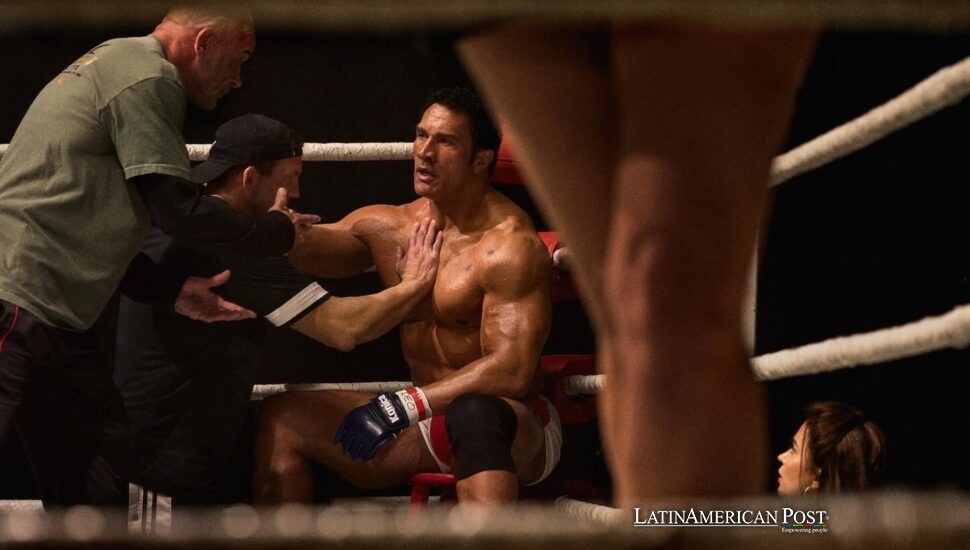Mexico Turns ‘The Smashing Machine’ into a Story About Heart, Not Hype

Mexico didn’t just host a Hollywood premiere—it redefined it. As Dwayne Johnson’s The Smashing Machine opened in Mexico City, Mexican fighters, fans, and lucha libre rituals transformed a Mark Kerr biopic into a meditation on courage, community, and what fighting really means.
A Premiere That Stepped Through the Ropes
Dwayne Johnson didn’t simply walk the red carpet—he made a ring walk. The stage for The Smashing Machine was built in the shape of a cuadrilátero, the iconic four-sided arena of lucha libre. It wasn’t a gimmick. It was a statement that Mexico’s wrestling culture would not play a supporting role—it would be part of the script.
“It’s essential for us, too, the wrestling,” Johnson said, pausing as the crowd roared. “We know how important lucha libre is in Mexican culture. It’s something wonderful,” he told the EFE.
The audience—many in masks, waving plush caricatures of “La Roca,” or flashing bull-head tattoos—responded like they were ringside for a championship bout. When the lights hit the stage, the biopic about American fighter Mark Kerr, a two-time UFC champion and troubled survivor of addiction, suddenly belonged to Mexico. The film’s themes—pain, redemption, and identity—felt less like imports and more like extensions of Mexico’s own fight stories.
In a country where wrestling is ritual, not spectacle, The Smashing Machine found new meaning: it wasn’t just about a man’s battle inside a cage, but about what comes after—the cost of survival and the search for grace.
Mexican Muscle on the Carpet, Mexican Meaning on the Screen
Hollywood’s glitter arrived, but Mexico brought the voltage. Director Benny Safdie, making his first solo feature, looked stunned by the crowd’s roar. “The energy here is contagious; you feel the emotion in every shout,” he told the EFE. “It’s the other side of the sport they love—and the other side of Dwayne.”
That “other side” runs deep in Mexican tradition. Safdie’s movie isn’t an adrenaline parade; it’s an autopsy of ambition and burnout. In Mexico, where lucha libre treats wrestlers as folk heroes—moral archetypes of good and evil—audiences read that vulnerability through a different lens. Fighters here are not just athletes but social mirrors; when they fall, the crowd mourns. When they rise, the crowd claims a piece of the triumph.
On the red carpet, the night’s guests told that story better than any PR line. Masked legend El Huracán arrived, nodding toward Johnson in silent approval. Mexican MMA fighters and wrestling icons posed side by side, blurring the lines between disciplines. The premiere wasn’t a crossover—it was a fusion, a global meeting on equal terms with the local.
Safdie seemed to recognize it. “There was complexity in his story and a beauty I wanted to show,” he said to the EFE. Johnson echoed the sentiment. “The chemistry was very special between Benny and me,” he said. “It’s essential when you know someone, especially in a fight movie that’s about the people behind the fight.”
That connection—between actor and director, between the film and its Mexican audience—became its own form of choreography.
Lucha Libre as a Lens, Not a Backdrop
The Mexican response revealed something that Hollywood often misses. The Smashing Machine didn’t flatten itself to travel; Mexico expanded it.
A cuadrilátero stage might look like fan service elsewhere, but in Mexico, it was communion. It bridged Johnson’s fictionalized version of Kerr’s battered body with the ritualized battles of lucha libre, where a mask hides the face but magnifies the soul. Here, audiences read Kerr’s collapse not as tragedy, but as myth—like a rudo who falls to darkness and must fight his way back.
For Safdie, who has built a reputation on human chaos (Uncut Gems comes to mind), the parallel was accidental but perfect. “There’s complexity, but there’s beauty in it,” he said. The Smashing Machine isn’t a redemption story; it’s an endurance story. Mexico, with its deep empathy for flawed heroes, understood that instantly.
Johnson, meanwhile, spoke the local language fluently—not Spanish, but respect. “Thank you, Mexico; every time I come, the support is incredible,” he told the EFE. The crowd’s answer wasn’t polite applause—it was a chant: “¡La Roca! ¡La Roca!”
In that moment, the movie stopped being a Hollywood export. It became something else entirely: a dialogue between the world’s most commercialized fight sport and the country that turned combat into poetry.
From Audience to Participant, Mexico Steps Inside the Frame
The crowd that night wasn’t passive. Mexico doesn’t just watch combat—it interprets it. The chants, the handmade signs, the masks—these weren’t accessories to fame. They were acts of authorship, a way of claiming the story as their own.
In a country where lucha libre is still a working-class theater of ethics and rebellion, every fight story faces the same question: What does pain buy? The Smashing Machine answers: dignity, if you can survive long enough to recognize it.
Safdie’s choice to spotlight Kerr’s private pain—his dependency, his depression, his humanity—plays differently here. Mexico’s wrestling culture already understands that performance is a mask that reveals more than it hides. A luchador’s fall from grace, a fighter’s public unraveling—these are not failures but mirrors held up to the audience’s own contradictions.
And the Mexican crowd was ready for it. They clapped at the struggle, not just the victory. They roared not at spectacle, but sincerity. The film’s themes of endurance found an echo in a culture that has turned resilience into an art form.
In the end, it wasn’t Dwayne Johnson’s star power that defined the night. It was the partnership between the film and the audience—a mutual recognition that fighting, in any form, is about holding on when no one’s watching.
The Smashing Machine premieres in Mexican cinemas on October 9, but the real debut has already happened. It wasn’t on a screen; it was on that makeshift ring where Mexico rewrote the meaning of a Hollywood story.
Also Read: Mexican Director Luis Estrada Finally Brings Las Muertas to Netflix, Uncensored and Unapologetic
Johnson brought the movie. Mexico got the soul.
In a city of masks and myths, the cheers that night didn’t sound like fandom. They sounded like ownership.




